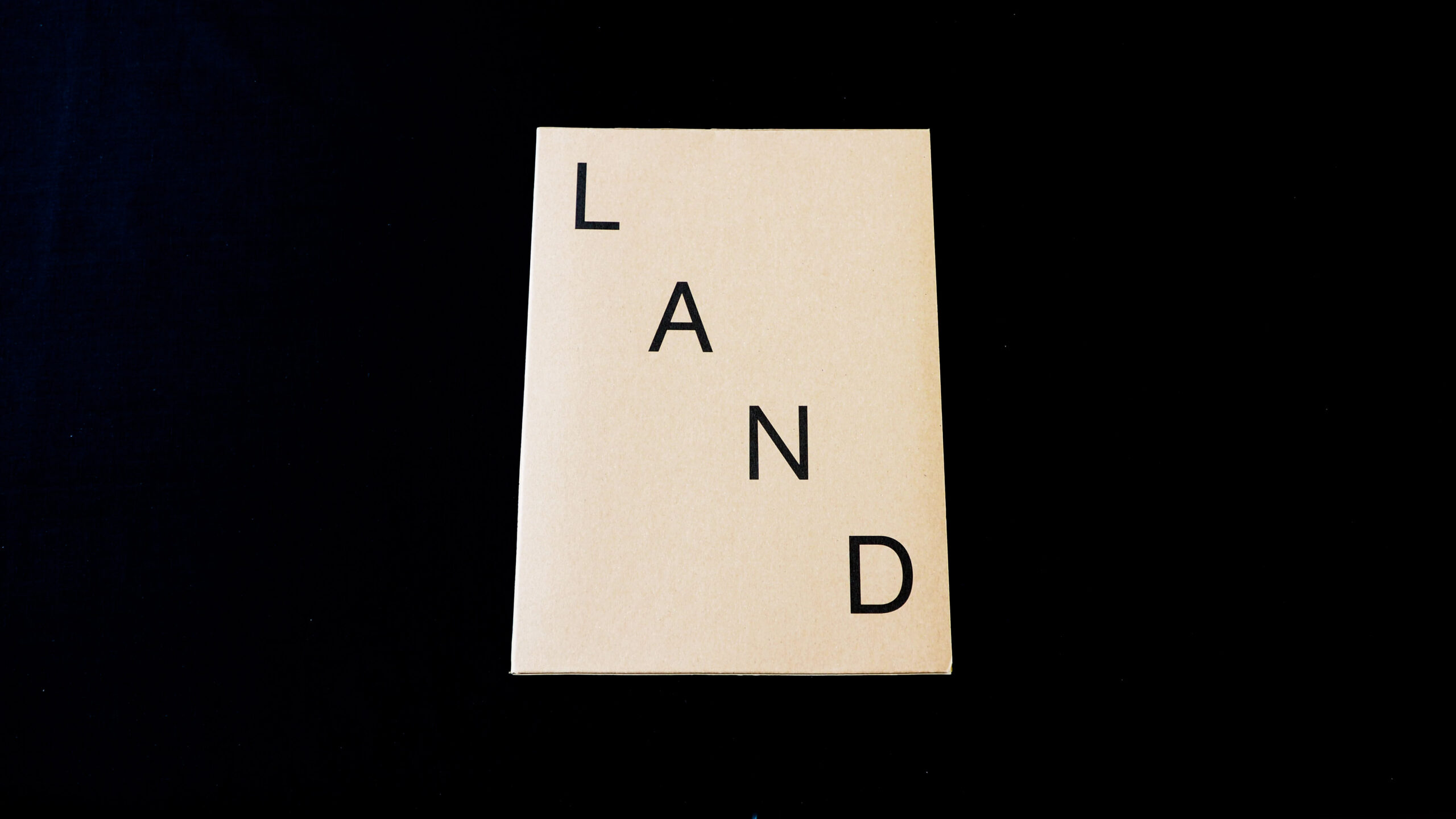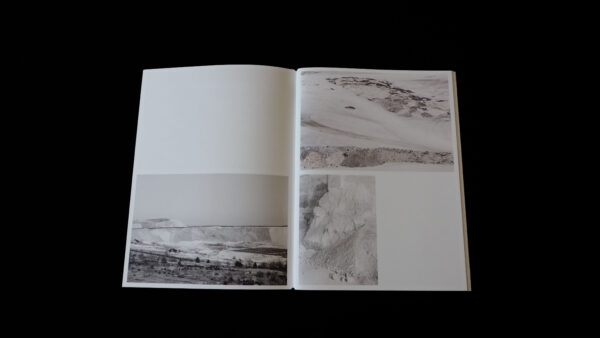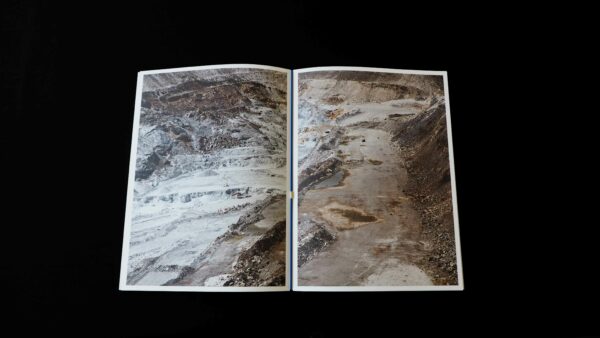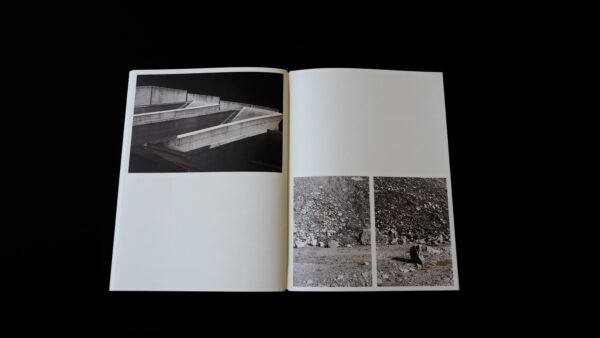LAND
LAND
LAND focuses on the volatility of the relationship between landscape and humans. The book gathers photographs of quarries around Europe, shot by photographer Laura Van Severen, who is fascinated by the transformation that the sites undergo through time. Underlying the whole series is the notion that these changes are brought about by humans, whose intervention is always perceptible despite the abstractness of the images.
The design of the book is the result of a clear intention. The lack of any text or fixed beginning is instrumental in the building of a fragmented narrative, where the audience is left to connect the pieces. The same fragmentation is reflected in the layout of the pages and the cropping of the photographs, which rarely reveal the size or distance of what is being depicted. Even the loose binding seems to suggest the same concept, since, hypothetically, every spread could be moved to a different position. The only necessary text available has been printed on an external cardboard case, suggestive of the tactility of the themes the book deals with. Finally, a perfect combination of paper choice and lithography mastery, which effectively convey the material quality of the photographs, makes this book an excellently crafted and designed object.
- Ondertitel
- On the brink of some formidably complex matter
- Auteur
- Laura Van Severen
- Oplage
- 500
- Omvang
- 64
- Prijs
- 27 euro
- ISBN
- 9789492051202
- Verschijningsdatum
- September, 2016
- Uitgever / Opdrachtgever
- The Eriskay Connection
- Ontwerper(s)
- Rob van Hoesel
- Fotograaf
- Laura Van Severen
- Drukkerij
- Graphius
- Lithograaf
- Graphius
- Boekbinderij
- Graphius
- Materiaal
- Munken Lynx Rough 1.4 150 g/m² (Antalis).
- Bindwijze
- Card slip case. Self-cover, held together with 2 mm blue elasticated cord which is kept in place by semicircular notches at either end of the back.
- Lettertype
- Akzidenz Grotesk
LAND focuses on the volatility of the relationship between landscape and humans. The book gathers photographs of quarries around Europe, shot by photographer Laura Van Severen, who is fascinated by the transformation that the sites undergo through time. Underlying the whole series is the notion that these changes are brought about by humans, whose intervention is always perceptible despite the abstractness of the images.
The design of the book is the result of a clear intention. The lack of any text or fixed beginning is instrumental in the building of a fragmented narrative, where the audience is left to connect the pieces. The same fragmentation is reflected in the layout of the pages and the cropping of the photographs, which rarely reveal the size or distance of what is being depicted. Even the loose binding seems to suggest the same concept, since, hypothetically, every spread could be moved to a different position. The only necessary text available has been printed on an external cardboard case, suggestive of the tactility of the themes the book deals with. Finally, a perfect combination of paper choice and lithography mastery, which effectively convey the material quality of the photographs, makes this book an excellently crafted and designed object.
- Ondertitel
- On the brink of some formidably complex matter
- Auteur
- Laura Van Severen
- Oplage
- 500
- Omvang
- 64
- Prijs
- 27 euro
- ISBN
- 9789492051202
- Verschijningsdatum
- September, 2016
- Uitgever / Opdrachtgever
- The Eriskay Connection
- Ontwerper(s)
- Rob van Hoesel
- Fotograaf
- Laura Van Severen
- Drukkerij
- Graphius
- Lithograaf
- Graphius
- Boekbinderij
- Graphius
- Materiaal
- Munken Lynx Rough 1.4 150 g/m² (Antalis).
- Bindwijze
- Card slip case. Self-cover, held together with 2 mm blue elasticated cord which is kept in place by semicircular notches at either end of the back.
- Lettertype
- Akzidenz Grotesk




